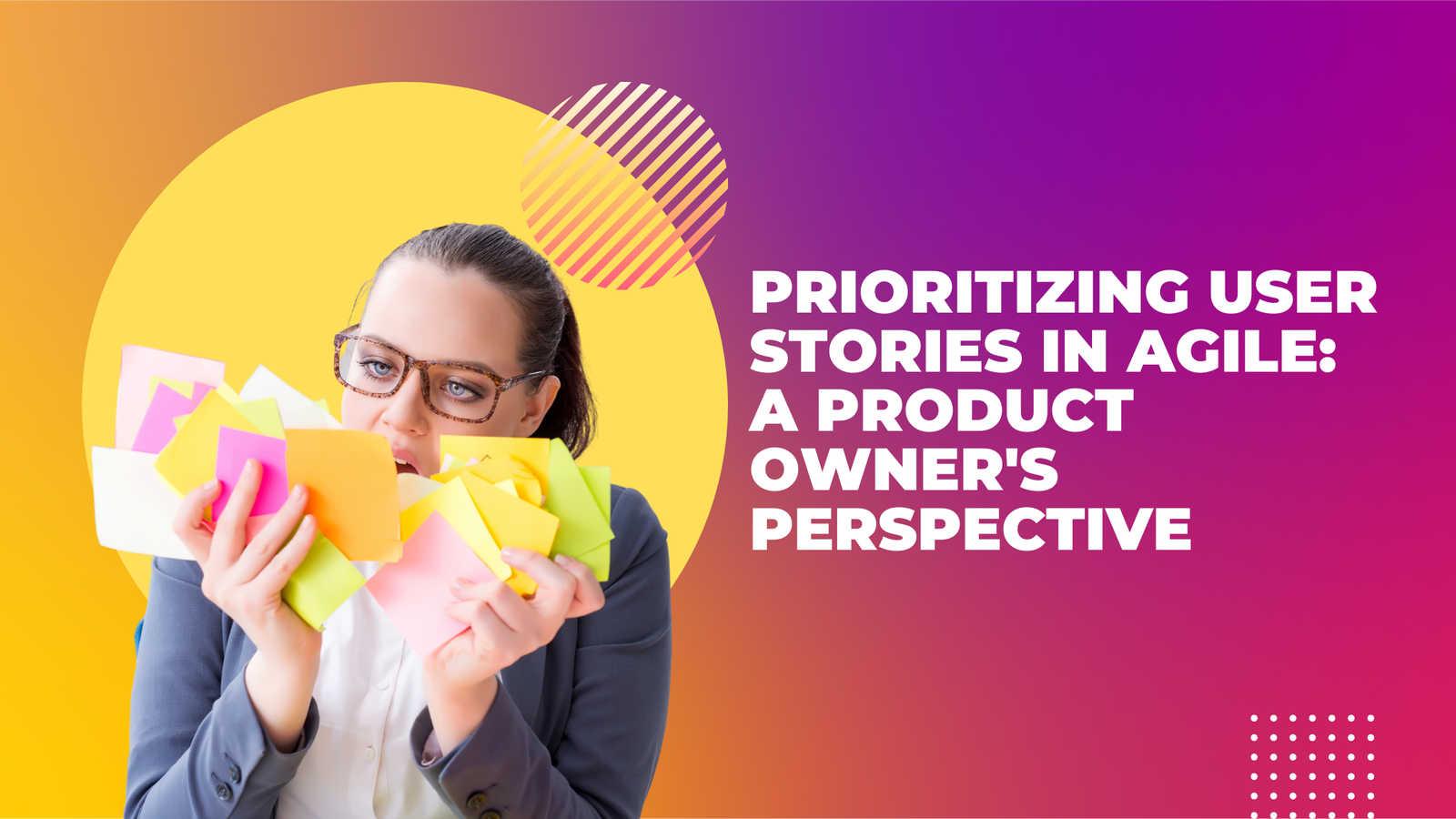As a Product Owner in an Agile environment, one of your crucial responsibilities is prioritizing user stories effectively. Prioritization ensures that the development team focuses on the most valuable work, maximizing the value delivered to the business and customers. In this article, we will explore different criteria for prioritizing user stories and discuss essential Agile ceremonies that aid in the process.
- Business Value: The foremost criterion for prioritization is the business value associated with each user story. Consider the impact of a user story on revenue, customer satisfaction, user engagement, and strategic goals. Prioritize tickets that align with the product vision and have a high potential to deliver tangible benefits. To evaluate the business value correctly, work closely with the Product Manager and understand
- User Impact: User impact measures how a user story affects the end-users of the product. Identify user stories that address pain points, enhance user experience, or fulfill critical user needs. Prioritize those that directly improve usability, accessibility, or customer satisfaction, thereby ensuring a positive impact on the user base.
- Risk and Dependencies: Evaluate the risks and dependencies associated with each user story. User Stories that mitigate critical risks or resolve dependencies for other high-priority items should receive attention. Prioritize user stories that reduce technical debt, address security vulnerabilities, or unblock other work to maintain a smooth development flow.
- Effort and Complexity: Consider the effort and complexity required to complete each user story. Break down the work into smaller tasks and estimate the relative effort involved. Prioritize user stories that are achievable within a reasonable timeframe. This criterion helps balance workload and avoids overloading the team with complex or time-consuming tasks.
- Customer Feedback and Insights: Customer feedback is invaluable for prioritizing user stories. Monitor user feedback channels, conduct user research, and leverage analytics to gain insights. Prioritize user stories that address common pain points, frequently requested features, or align with user expectations. This customer-centric approach ensures that the team focuses on solving real user problems.
Agile Ceremonies to Aid Prioritization:
- Product Backlog Refinement: Regularly conduct backlog refinement sessions to review and prioritize user stories. Collaborate with the development team to clarify requirements, estimate effort, and validate assumptions. This ceremony helps maintain a well-prioritized and groomed backlog.
- Sprint Planning: During Sprint Planning, select the highest-priority user stories from the backlog to be included in the upcoming sprint. Collaborate with the team to assess capacity, dependencies, and feasibility. Ensure that the selected user story align with the sprint goal and provide value to the stakeholders.
- Daily Stand-ups: Daily stand-ups provide an opportunity to discuss progress and address any blockers. Use this ceremony to reevaluate prioritization if new information or challenges arise. Encourage the team to raise concerns or suggest reprioritization based on their ongoing work.
- Sprint Review: In the Sprint Review, gather feedback from stakeholders on the completed work. Use this feedback to validate the prioritization decisions made. Incorporate valuable insights into future prioritization to continuously align with stakeholder expectations.
- Retrospective: Include prioritization as a topic in the retrospective. Reflect on the effectiveness of past prioritization decisions and identify areas for improvement. Discuss how prioritization impacted the team’s ability to deliver value and explore techniques for enhancing the process.
As a Product Owner in an Agile environment, effective user story prioritization is crucial for delivering value to the business and customers. By considering the above criterias, you can make better decisions on prioritization and deliver value to your consumers. Prioritizing user stories wisely also ensures that the team focuses on the most valuable work, driving the success of the product and the satisfaction of stakeholders.
